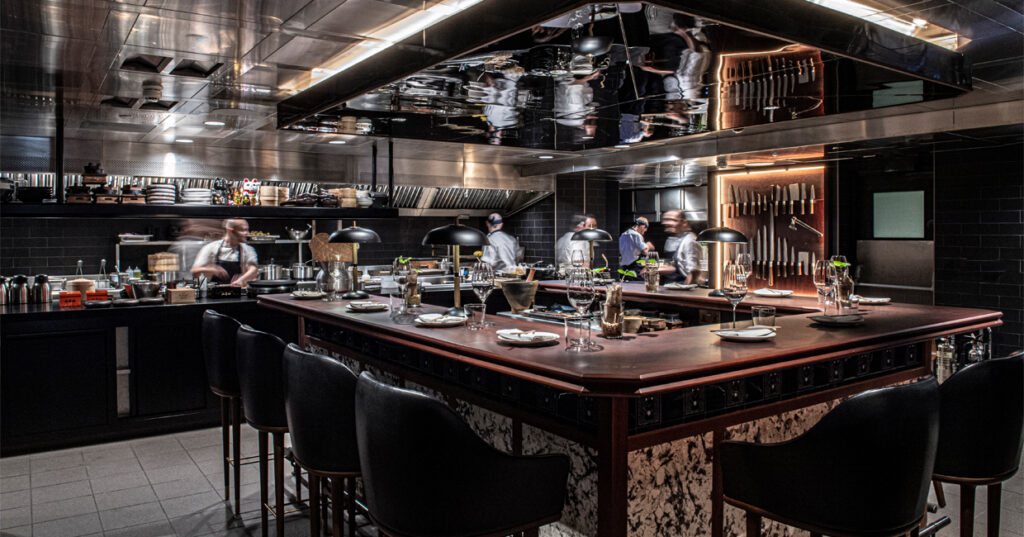1930s Tokyo perhaps represents the heydey of kissaten culture, when throngs of people would gather in the city’s multitude of chic kissas to enjoy jazz music, great drink and food. Growing restrictions on such venues throughout the 1920s and 30s had, naturally, lent them a certain air of rebelliousness that only served to heighten their appeal.
Internationally-renowned design studio, AfroditiKrassa has drawn extensively from this vibrant era and its urban-cool vibe for the interior of Lucky Cat, a new restaurant by Gordon Ramsay Restaurants.
The restaurant’s design narrative is clear and impactful without overpowering the F&B offering, Afroditi explains. “The scale and ambition of this project is what has excited us from the very start,” she says. “Working very closely with Gordon and his team, we have successfully curated something that is relevant but not formal, vibrant but not overbearing, and predominantly, allows the food and drinks to take centre stage.”
“1930s Tokyo perhaps represents the heydey of kissaten culture, when throngs of people would gather in the city’s multitude of chic kissas to enjoy jazz music, great drink and food”
A carefully considered layout ensures that every table in the house has an exciting perspective, whether it be savouring the theatre of the kitchen from the Chef’s tables, or enjoying the luxurious Raw Bar with its exquisite sushi and sashimi.
Should they wish, customers can also rent out one of the private dining rooms, which echo the main restaurant space with their blend of dark indigo shades, distressed leather chairs and warm mood lighting.
With an underlying art deco influence, intricately curved brass screens, antique mirrors, black bamboo panelling and layered linen screens provide a rich tapestry of textures, whilst geometric patterns, Japanese indigo dyed fabrics and distressed leather maintain a playful ambience.
“The main focal point is the Maneki Nejo cat wall in the bar area, which comprises 300 bespoke, handmade ceramic cats”
Standout design features include the cast brass bamboo bar front, as well as eye-catching Japanese knife displays.
Of course, it’s only fitting that playful cat references thread throughout the venue. These have been artfully integrated in the form of subtle cat relief tiles, stone cat statues and cat tail hooks. The main focal point, however is the Maneki Nejo cat wall in the bar area, which comprises 300 bespoke, handmade ceramic cats.
AfroditKrassa’s bold, atmospheric design flies in the face of Japanese architectural stereotypes, creating an immersive and almost otherworldy dining experience. Much like Tokyo’s kissas, Lucky Cat is a vibrant meeting place, where enjoyment and great food and drink are all that matters.



